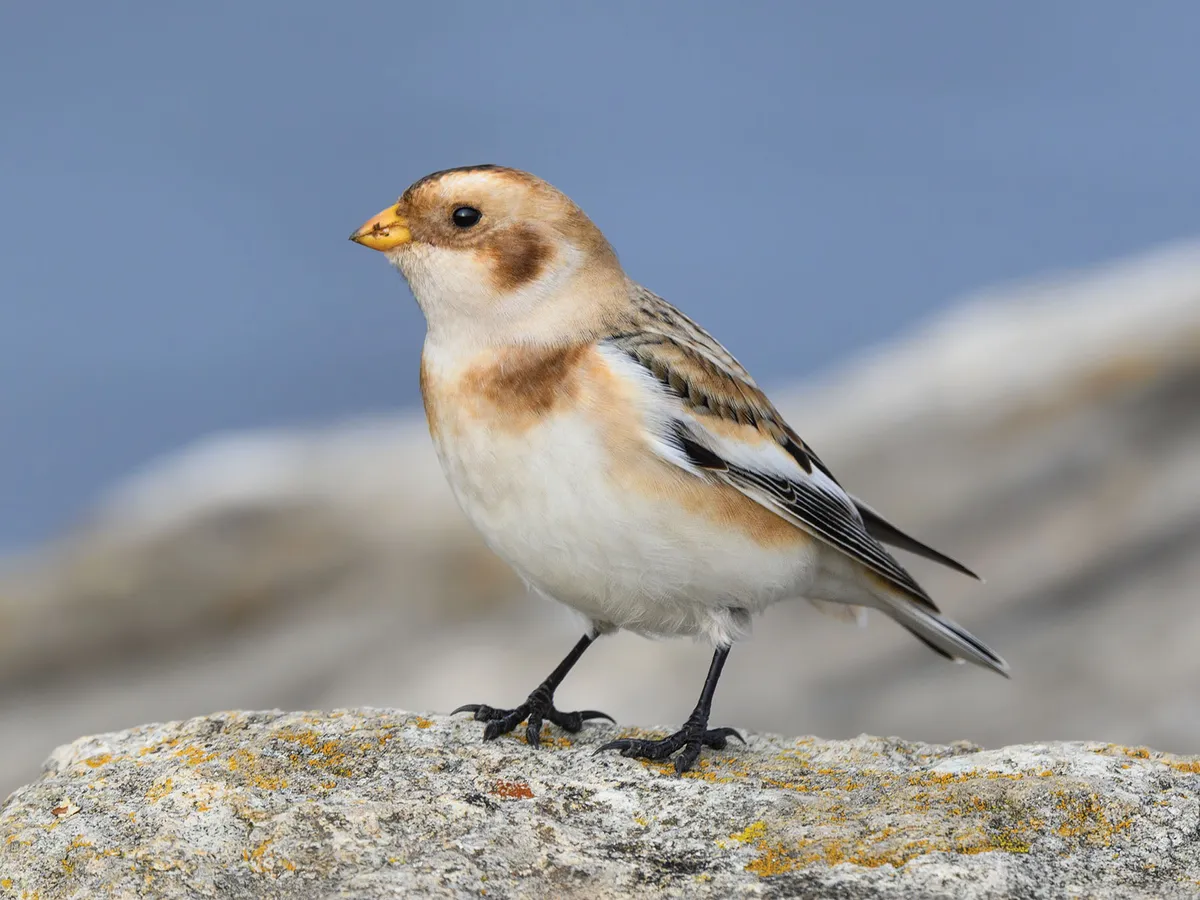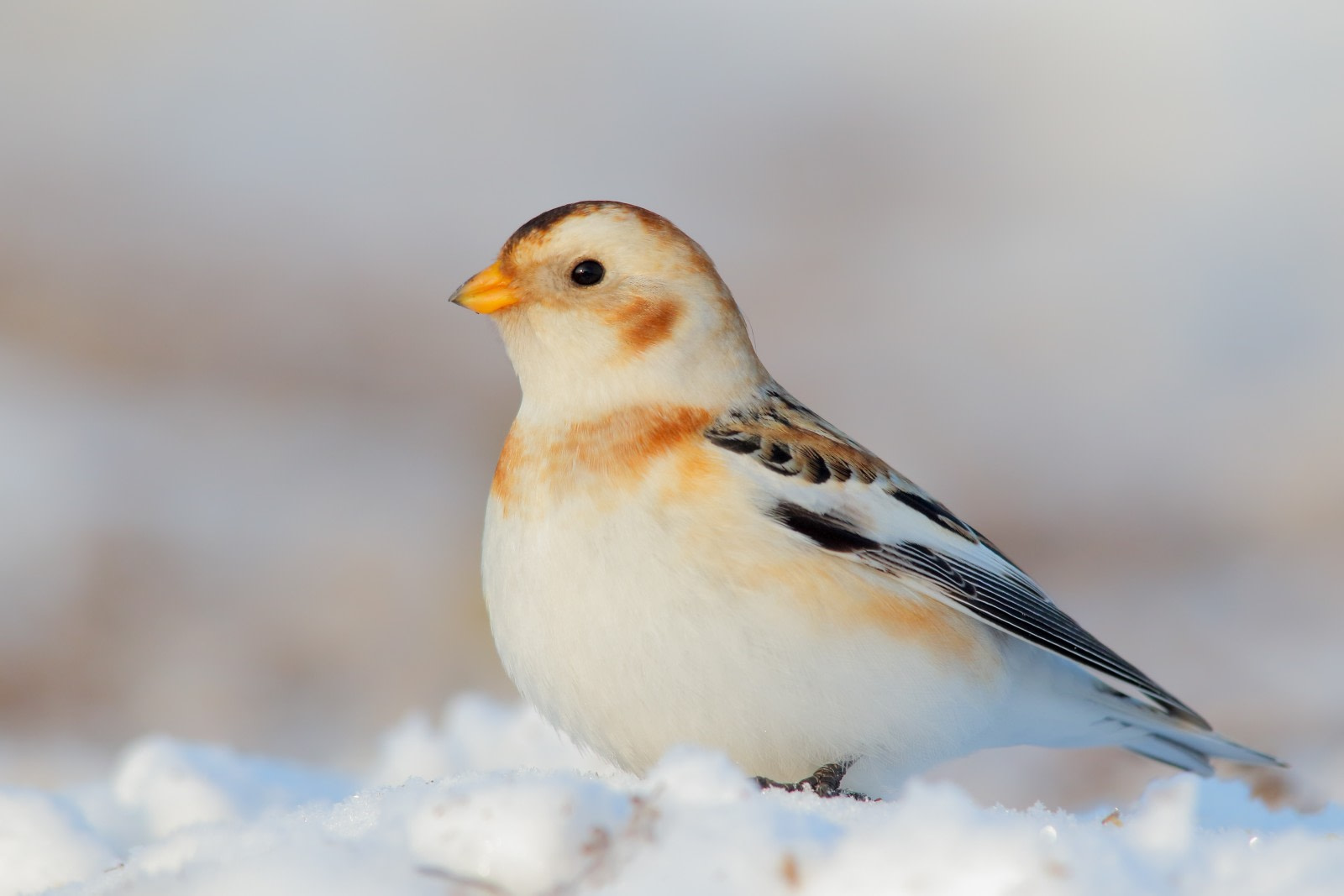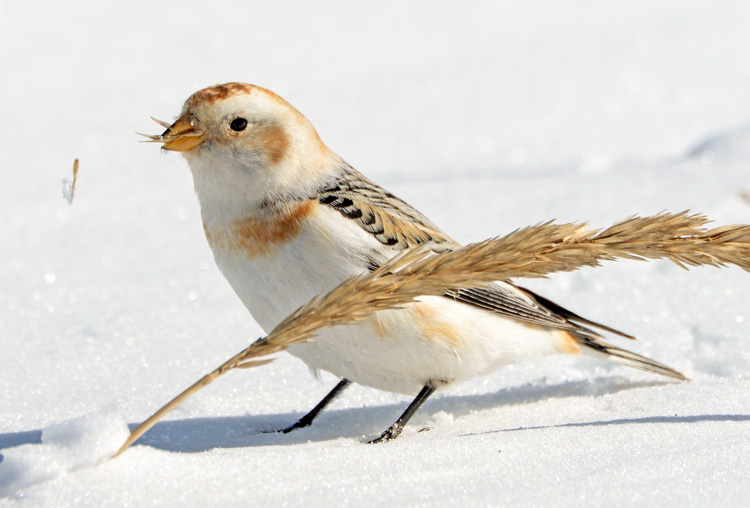The Snow Bunting is a small songbird that breeds in extreme climates. These gregarious birds live in cold, open habitats, frequently flying from spot to spot and showing off their snow-white wing and tail feathers.

Appearance & Identification
The Snow Bunting is a distinctive bird, although it may be confused with other buntings, longspurs, and larks that share its habitat.
What do Snow Buntings look like?
The Snow Bunting is a relatively large, finch-like songbird with a stocky build and a short conical bill. Their colours vary with seasons, although birdwatchers are most likely to see them in their rusty winter plumage. When seen in flight, these birds have characteristic white wings with black tips and white outer tail feathers.
Males are primarily white in the summer, with black backs and wings. In the winter, their backs become paler, and they develop brownish marks across the upper chest, the sides of the face, and the crown and nape.

Female Snow Buntings have similar plumage but have black peppering on the head and a grizzled black and white back. In the winter, females develop more rusty brown plumage on the back, head, and breast. The bill is black during the breeding season in both sexes, changing to a yellow-brown shade in the winter.
Juvenile Snow Buntings seen from July to September are greyish above with paler bellies and a yellowish bill. These dull feathers are soon lost as they moult into their adult plumage.

How big are Snow Buntings?










